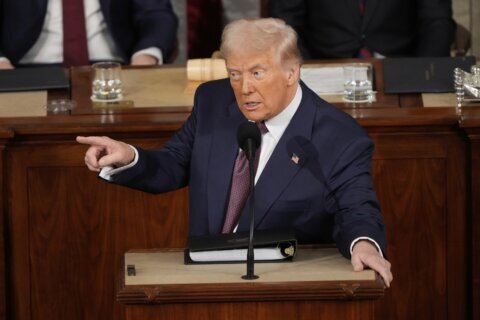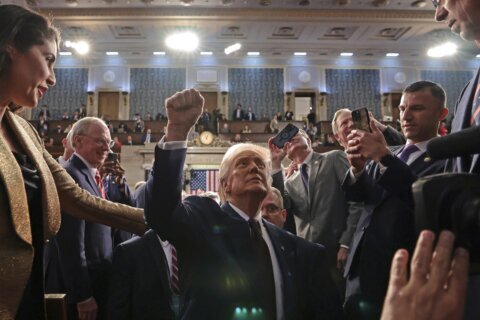Exchange-traded funds, or ETFs, make it easier for investors to get exposure to numerous quality investments. Fund managers handle the selection of stocks that align with an ETF’s stated objectives.
Large-cap ETFs hold stocks with market capitalizations of $10 billion or more. However, most of the stocks in these types of funds tend to have market caps well above $10 billion. For instance, Microsoft Corp. (ticker: MSFT) is a regular staple in many of these funds and has a market cap above $3 trillion.
[Sign up for stock news with our Invested newsletter.]
Large-cap ETFs offer several advantages over mid- and small-cap ETFs. Louis Wolkenstein, managing principal at The Investment Advisor, highlights some of the benefits that large-cap ETFs provide: “The benefit of large-cap stocks over mid- and small-cap stocks is greater stability, consistency of returns and less volatility, generally speaking. Large-cap stocks are more likely to pay dividends than mid- or small-cap stocks.”
Large-cap ETFs allow investors to gain exposure to industry giants without monitoring their holdings. You can monitor and compare ETFs instead of diving deep into individual stock analysis.
Even though ETFs make investing easier, you still have to compare them to determine which fund offers the best opportunities. It’s also important to assess if the fund aligns with your long-term financial goals.
Julia Khandoshko, CEO of the international broker Mind Money, shares some key details to consider when comparing large-cap ETFs: “When assessing ETFs, investors need to examine a set of factors: ETF rules, management fees and so on. But the truth is that anyone can simply choose the biggest one, as it is the most liquid and, therefore, the most reliable. Thus, liquidity equals reliability.”
Choosing funds with large assets under management can result in lower expense ratios and higher liquidity. And although funds’ size matters, so do their holdings. These large-cap ETFs prioritize stocks with high market caps that have generated good returns for patient investors:
| Large-Cap ETF | Expense ratio |
| Vanguard Growth ETF (ticker: VUG) | 0.04% |
| Invesco QQQ Trust (QQQ) | 0.20% |
| Schwab US Large-Cap ETF (SCHX) | 0.03% |
| Invesco S&P 500 Top 50 ETF (XLG) | 0.20% |
| Vanguard Mega Cap Growth ETF (MGK) | 0.07% |
| Schwab US Large-Cap Growth ETF (SCHG) | 0.04% |
| iShares Russell 1000 Growth ETF (IWF) | 0.19% |
Vanguard Growth ETF (VUG)
The Vanguard Growth ETF has $121.4 billion in total assets and a 0.04% expense ratio. This very affordable fund has been a top performer for many years. It has an annualized return of 16.3% over the past 15 years, and a 16.7% annualized return over the past five.
VUG has 202 holdings, with a big chunk of its capital allocated to the Magnificent Seven stocks. The fund has 13% of its assets in Microsoft stock. Apple Inc. (AAPL), Nvidia Corp. (NVDA) and Amazon.com Inc. (AMZN) account for a combined 26.3% of the fund’s total assets.
The fund managers have been with VUG for a while. A fund veteran with a long tenure with Vanguard, Gerard C. O’Reilly has been managing the Vanguard Growth ETF since 1994. Walter Nejman has co-managed the fund with O’Reilly since 2016.
Most of the fund’s holdings are U.S. corporations. Only 0.2% of the fund’s total assets go into non-U.S. equities, with 0.2% held in cash now.
Invesco QQQ Trust (QQQ)
Invesco QQQ Trust is considered one of the most liquid ETFs available. It has $258 billion in total assets and focuses on large-cap U.S. stocks.
QQQ has outperformed the S&P 500 by a wide margin since its inception in 1999. The ETF has an impressive 19.4% annualized return over the past 15 years. It’s held steady with a 19.1% annualized return over the past five years. The fund has a 0.2% expense ratio.
QQQ tracks the Nasdaq 100 and prioritizes the Magnificent Seven stocks. Each member of the cohort, including Microsoft, Apple, Nvidia, Amazon, Meta Platforms Inc. (META), Alphabet Inc. (GOOG, GOOGL) and Tesla Inc. (TSLA), make up part of the fund’s top 10 assets.
Broadcom Inc. (AVGO) holds the No. 6 spot with 4.4% of the fund’s total assets. Alphabet Class A and C shares are right below it, along with Tesla. Microsoft makes up 8.6% of the fund’s total assets and has the most weight on the fund’s performance.
Schwab US Large-Cap ETF (SCHX)
The Schwab US Large-Cap ETF has a low 0.03% expense ratio and prioritizes U.S. large-cap stocks. A 12.6% annualized return over the past decade shows its rock-solid track record. It’s generated a 13.7% annualized return over the past five years.
Investors get access to the 750 largest U.S. companies as ranked by full market cap. The fund has a 1.02 beta, which indicates its volatility is roughly in line with the stock market. It also has a 20.8 price-to-earnings ratio and a heavy concentration in the Magnificent Seven stocks. Microsoft is the fund’s largest position, and it makes up 6.6% of its total assets.
The four-manager team includes Ferian Juwono, who has led the fund since 2010. SCHX has $39.9 billion in total net assets and has a trailing-12-month yield of 1.3%.
Invesco S&P 500 Top 50 ETF (XLG)
The Invesco S&P 500 Top 50 ETF prioritizes the top 50 stocks in the S&P 500 based on market cap. While the S&P 500 has generated solid long-term returns, funds like XLG demonstrate that it’s possible to achieve higher returns by focusing on the best of the best.
XLG has a 0.2% expense ratio and $4.1 billion in total assets. The fund has delivered a 14.8% annualized return over the past 15 years, and a 16.3% annualized return over the past five. Three of the four fund managers started their tenures in April 2018.
The fund only invests in U.S. equities and prioritizes the Magnificent Seven. Microsoft is the largest holding, with 12.2% of the fund’s total assets.
Vanguard Mega Cap Growth ETF (MGK)
The Vanguard Mega Cap Growth Index Fund ETF has an annualized return of 16.8% over the past 15 years, and a whopping 17.4% annualized return over the past five years. The portfolio is unsurprisingly anchored by the Magnificent Seven stocks.
Microsoft leads the way once again, with 14.9% of the fund’s total assets. Apple and Nvidia are the two next-largest positions, making up 11.9% and 10.1% of holdings, respectively. MGK gives most of its returns back to shareholders, because it only charges a 0.07% expense ratio.
The top-heavy fund is managed by O’Reilly and Michelle Louie. O’Reilly has overseen MGK since 2015, and Louie joined the management team in 2021.
Schwab US Large-Cap Growth ETF (SCHG)
Rated five stars by Morningstar, the Schwab US Large-Cap Growth ETF has $27.3 billion in total assets and a minuscule 0.04% expense ratio. The fund has delivered exceptional returns for long-term investors, highlighted by a 16% annualized return over the past decade and a sizzling 18% annualized return over the past five years.
Microsoft, Apple and Nvidia are the fund’s top three positions, together composing 32% of the fund’s holdings. The fund’s portfolio managers make up the same team that manages SCHX: Juwono, Christopher Bliss, Jeremy Brown and Agnes Zau. The managers started collaborating on SCHG at the same time that they started with SCHX.
iShares Russell 1000 Growth ETF (IWF)
Also earning a five-star rating from Morningstar, the iShares Russell 1000 Growth ETF has $89 billion in total assets and a 0.19% expense ratio. While the fund focuses on large-cap and mid-cap stocks, most of its funds are allocated toward stocks with large market capitalizations.
Each member of the Magnificent Seven makes the ETF’s top 10 holdings. These seven stocks, including Class A and Class C shares of Alphabet, make up a combined 49.6% of the fund’s total assets. Eli Lilly & Co. (LLY) and Broadcom round out the top 10.
IWF has delivered an annualized 16.6% return over the past 15 years. It’s also maintained an annualized return of 17.2% over the past five years. The fund has been around since 2000, and Greg Savage leads its three-person management team with a strong record going back to 2008.
More from U.S. News
7 Best Cryptocurrency ETFs to Buy
7 Best Large-Cap ETFs to Buy in 2024 originally appeared on usnews.com
Update 05/07/24: This story was previously published at an earlier date and has been updated with new information.







